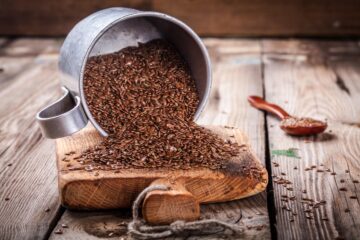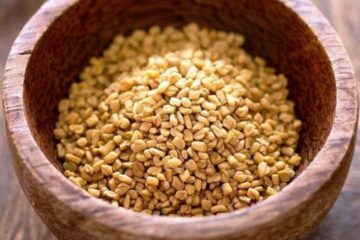Name:
The herb in focus is commonly known as Valerian. Its scientific name is Valeriana officinalis, placing it in the Valeriana genus and the officinalis species.
Description:
Valerian is a perennial flowering plant with sweetly scented pink or white flowers. It can grow up to 1.5 meters (5 feet) tall. The leaves are pinnate, with 7 to 10 pairs of lance-shaped, toothed leaflets. Its rhizome (underground stem) and roots are widely used in herbal medicine.
Medicinal Uses of Valerian:
- Insomnia and Sleep Disorders: Valerian is perhaps best known for its use in managing insomnia and sleep disorders. A review of multiple studies published in the American Journal of Medicine (https://www.amjmed.com/article/S0002-9343(06)00275-4/fulltext) found that valerian extract may improve sleep quality without producing side effects, making it a viable alternative to conventional sleep medications. Its precise mechanism of action is not fully understood, but it’s believed to interact with the gamma-aminobutyric acid (GABA) neurotransmitter in the brain, which can produce a sedative effect.
- Anxiety and Stress: Valerian may also be beneficial in managing anxiety and stress. The root extract appears to have anxiolytic properties, which can help reduce anxiety levels. A study published in Phytotherapy Research (https://onlinelibrary.wiley.com/doi/abs/10.1002/ptr.1227) found that valerian extract can exert a calming effect in stressful situations, making it a potential natural remedy for acute stress management.
- Menstrual Symptoms and Menopause: There is preliminary evidence to suggest that valerian may help relieve menstrual cramps and symptoms of menopause. A study in the Journal of Alternative and Complementary Medicine (https://www.liebertpub.com/doi/abs/10.1089/acm.2010.0143) found that valerian root may reduce the severity of menstrual cramps. Furthermore, a research article in Menopause (https://journals.lww.com/menopausejournal/Abstract/2013/02000/A_valerian_root_extract_and_valerenic_acid.8.aspx) indicated that valerian might be beneficial for women experiencing hot flashes during menopause.
- Restless Leg Syndrome (RLS): Valerian has also been used to treat Restless Leg Syndrome, a condition characterized by an irresistible urge to move the legs. A study conducted by the Department of Family Medicine at the Tehran University of Medical Sciences (https://pubmed.ncbi.nlm.nih.gov/25642988/) showed promising results for the use of valerian in treating RLS.
- Digestive Disorders: Valerian has been traditionally used to alleviate symptoms of digestive disorders, such as indigestion, bloating, and irritable bowel syndrome (IBS). While limited research exists in this area, a study published in the European Journal of Medical Research (https://europepmc.org/article/med/24199972) suggests that valerian extract may have antispasmodic properties, which can help relax the muscles of the digestive tract and reduce gastrointestinal discomfort. Further research is needed to establish the effectiveness of valerian for specific digestive disorders.
- Migraines and Headaches: Valerian has also been explored for its potential in managing migraines and headaches. A randomized controlled trial published in the European Journal of Neurology (https://pubmed.ncbi.nlm.nih.gov/19793214/) investigated the effects of a combination of valerian and butterbur extract on migraines. The study found that the combination treatment was effective in reducing the frequency and intensity of migraines. However, more research is needed to confirm these findings and understand the mechanisms of action.
- Attention Deficit Hyperactivity Disorder (ADHD): Valerian has been considered as a potential natural alternative for managing symptoms of Attention Deficit Hyperactivity Disorder (ADHD). A pilot study published in Phytomedicine (https://www.sciencedirect.com/science/article/abs/pii/S0944711309000825) evaluated the effects of valerian extract on children with ADHD. The results suggested that valerian may have a beneficial effect in reducing ADHD symptoms, but larger, well-designed studies are needed for more conclusive evidence.
- Muscle Relaxation and Pain Relief: Valerian has been traditionally used as a muscle relaxant and for pain relief. While the exact mechanisms are not well understood, valerian may have muscle-relaxing properties due to its interaction with GABA receptors in the central nervous system. However, further research is required to establish the efficacy of valerian for these purposes.
Origin and Distribution:
Valerian is native to Europe and parts of Asia, but it is now also grown in the Americas. It is typically found in meadows and woodlands, and it is cultivated for medicinal purposes.
Cultivation and Care:
Valerian prefers full sunlight to partial shade and well-drained soil with a good amount of organic matter. It needs moderate watering and is fairly easy to grow. Valerian can be propagated from seed or root division.
Harvesting and Storage:
The roots of Valerian plants are typically harvested in the fall of their second year. After harvesting, they are dried at a low temperature and stored in a cool, dry place.
Uses:
Culinary Uses: While not commonly used in mainstream cuisine, the young leaves of Valerian can be used in salads and the roots are sometimes used as a flavoring agent in beverages.
Medicinal Uses: The root of Valerian is often used in herbal supplements for sleep disorders, particularly insomnia. The National Center for Complementary and Integrative Health (https://www.nccih.nih.gov/health/valerian) indicates that some studies suggest it can help improve sleep quality and reduce the amount of time it takes to fall asleep.
Other Uses: Valerian is also used as a decorative garden plant due to its attractive flowers and pleasant scent.
Safety Information:
Valerian is generally safe for most people when used in medicinal amounts short-term. However, it can cause some side effects such as headache, excitability, uneasiness, and even insomnia in some people. Mayo Clinic (https://www.mayoclinic.org/drugs-supplements-valerian/art-20362032) advises to consult a healthcare provider before using Valerian, especially for people who are pregnant, nursing, or on medication.
Historical and Cultural Significance:
Valerian has been used for medicinal purposes since ancient Greek and Roman times, often as a remedy for insomnia and anxiety. It is also associated with folklore and legends; it was believed to have the power to tame all beasts and was often used as a charm.
Conservation Status:
There are no significant conservation concerns for Valerian at present as it is widely cultivated and not threatened in its natural habitats.




